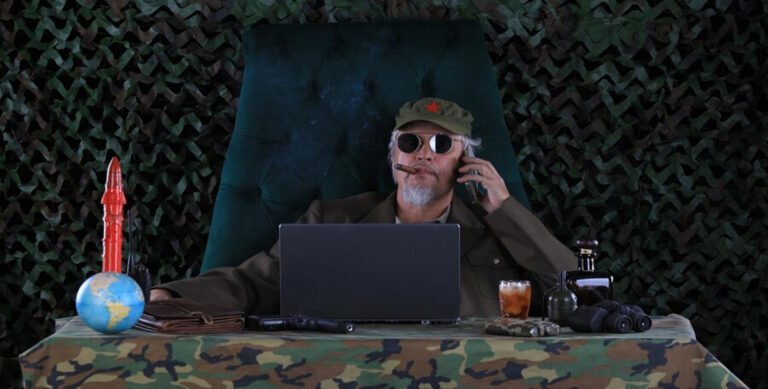In the annals of World War II, the Ghost Army stands out as a remarkable example of ingenuity and deception. Known for its innovative tactics, this unit played a crucial role in misleading the enemy through various forms of camouflage and psychological operations. Central to this unit’s identity is the Ghost Army hat, a symbol that encapsulates their unique mission. In this article, we will explore the history of the Ghost Army, the significance of the Ghost Army hat, and the legacy it leaves behind.
The Origins of the Ghost Army

The Ghost Army, formally known as the 23rd Headquarters Special Troops, was established in 1944 as a secret unit of the United States Army. Comprised of artists, designers, sound engineers, and other creative professionals, the unit was tasked with creating the illusion of a larger, more formidable force to deceive German troops. This deception was achieved through a combination of inflatable tanks, sound effects, and clever camouflage.
The unit was activated in response to the need for a strategic advantage in the European Theater. As Allied forces pushed through France and into Germany, the importance of misleading the enemy became increasingly clear. The Ghost Army conducted over twenty deceptive operations, contributing significantly to the success of various campaigns.
The Role of Deception in Warfare
Deception has been a part of warfare for centuries, but the Ghost Army took it to new heights. Their operations were carefully planned, utilizing a mix of visual and auditory illusions. The Ghost Army hat, often worn by its members, became a visual cue that signified this blend of creativity and military strategy.
The unit employed inflatable decoys, which could be quickly deployed to create the appearance of troop formations and heavy artillery. Sound engineers created audio recordings of vehicle noises, troop movements, and other sounds to further enhance the illusion of a larger force. The combination of these tactics led enemy forces to misjudge the strength and positioning of Allied troops.
The Ghost Army Hat: A Symbol of Camouflage and Creativity
The Ghost Army hat itself is a fascinating piece of military history. Often designed in camouflage patterns, it served multiple purposes. Not only did it provide practical benefits for soldiers operating in the field, but it also became a symbol of the unit’s mission. The hat represented the blend of artistic skill and military strategy that defined the Ghost Army.
The design of the hat varied, with some members opting for standard military issue while others customized their headgear. The creativity expressed in these hats reflected the unit’s broader mission to confuse and mislead the enemy. Each hat told a story, serving as a reminder of the duality of their operations—where art met warfare.
Famous Operations
One of the most notable operations carried out by the Ghost Army was Operation Viersen in 1945. This operation involved the use of inflatable tanks and sound effects to create the illusion of a major Allied offensive in the Rhine region. The Ghost Army’s efforts led German forces to divert troops and resources away from the actual invasion, ultimately aiding the success of the Allied campaign.
Another significant operation was the deception surrounding the Battle of the Bulge. The Ghost Army deployed their tactics to mislead German commanders about the strength and location of American forces. This successful operation not only showcased the unit’s ingenuity but also had a direct impact on the course of the battle.
The Legacy of the Ghost Army
The Ghost Army’s operations remained classified for decades after the war, and it wasn’t until the 1990s that the full extent of their contributions was revealed. Their unique approach to warfare has since become a subject of interest for historians and military strategists alike.
The Ghost Army hat has also gained attention as a symbol of creative military tactics. Today, it is not only a historical artifact but also a piece of memorabilia that honors the men and women who served in this remarkable unit. Various museums and exhibitions, including the National WWII Museum, showcase the hat and other artifacts from the Ghost Army, allowing visitors to learn about their fascinating story.
Cultural Impact and Recognition
In recent years, the Ghost Army has been recognized in popular culture, inspiring books, documentaries, and even theatrical productions. The story of this unit resonates with themes of deception, creativity, and the human spirit’s resilience in the face of adversity. The Ghost Army hat, in particular, has become an emblem of this narrative, symbolizing the intersection of art and warfare.
The documentary “The Ghost Army” (2013) sheds light on the unit’s operations and their impact on the war. Interviews with surviving members and their families offer personal insights into the challenges they faced and the camaraderie they shared. Such narratives have helped keep the legacy of the Ghost Army alive, ensuring that their contributions are not forgotten.
Modern-Day Relevance
The lessons learned from the Ghost Army’s operations remain relevant in modern military strategy. The use of deception, creativity, and psychological warfare is still employed by armed forces around the world. As technology advances, the methods may evolve, but the fundamental principles of misleading the enemy remain a critical component of military tactics.
In addition to its military significance, the Ghost Army serves as a reminder of the power of creativity in problem-solving. The blend of artistic skills and military strategy exemplifies how diverse talents can come together to achieve a common goal. This is a valuable lesson applicable not only in warfare but also in various fields such as business, education, and beyond.
Conclusion
The Ghost Army hat is more than just a piece of military attire; it symbolizes a unique chapter in history where creativity and deception were used to outsmart the enemy. The Ghost Army’s innovative tactics contributed significantly to the success of the Allied forces during World War II, and their story continues to inspire new generations.
More Read:
